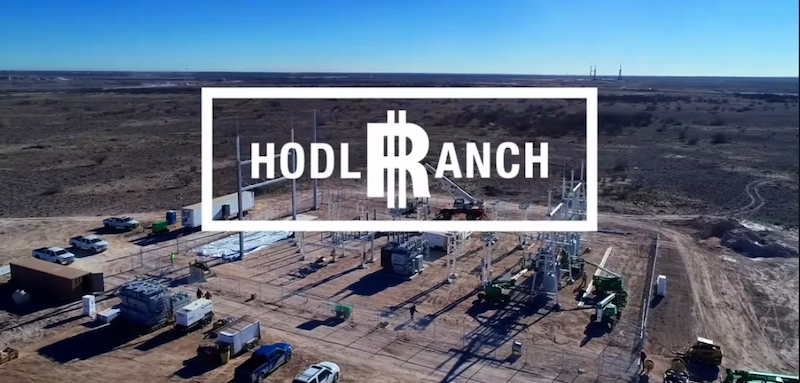With the blockchain’s growing carbon footprint raising significant concerns amongst local and global leaders, we can no longer turn a blind eye to the issue of blockchain sustainability. When the Biden administration rejoined the Paris climate accord, it sent a clear message that the U.S. was taking a serious stance on the issue. Likewise, some federal and state agencies followed up with their statements that green energy is a priority.
Closer to home on the crypto front, a proposed bill in the state of New York will prohibit crypto mining operations until regulators can assess its full impact on the environment. Green crypto mining operations have become an imperative, not just a “nice to have” bonus.
More notably, Treasury Secretary Janet Yellin used the term “staggering” when describing Bitcoin’s energy consumption.

Sustainable Blockchain Projects – The New “Must Have”
There’s no doubt that crypto is here to stay, regardless of the scaremongering tactics from news media naysayers and politicians. The blockchain brings long-term benefits to consumers and businesses alike, particularly when it comes to reducing transactions costs while adding better reliability and transparency.
But as the industry matures, the blockchain sustainability issue has come to the forefront. The rallying cry is that we need green cryptocurrencies now. Besides making a quicker environmental impact, it will be far easier to implement blockchain sustainability and green cryptocurrencies now than reverse engineer the system later. Take the auto industry, for example. Having to retrofit carbon-neutral solutions so many years later has come with much greater costs.
Sustainable Blockchain Projects – Social Idealism
Social idealism has always been part of the equation when it comes to blockchain sustainability. Starting with Bitcoin, its ethos was to provide the world with an alternative to the unjust global financial system. So the blockchain from its inception has been about creating applications with a positive social impact.
Hence, the steps toward reaching the goal of green cryptocurrencies won’t be antithetical to its foundation.
Are you ready to learn about Bitcoin? Have you ever wanted to have the concept of a Bitcoin ETF explained? The best place to start is with the Blockchain & Bitcoin Fundamentals course at Moralis Academy.
Blockchain Sustainability and Web3
The blockchain can bring about positive social change simply through network participation. The differences couldn’t be more profound when looking at how tech giants like Facebook (now Meta) and Twitter operate. Theirs is a centralized network that feeds the lion’s share of profits to a small number of influential shareholders. This small group controls the platform’s growth and the benefits. On the other hand, decentralized blockchains benefit the community and network participants, not just the powerful few.
Decentralized networks also provide greater transparency. Multiple parties verify each transaction, and no one can edit the record without the entire network knowing about it. Big-tech outfits, on the other hand, keep their algorithms secret.
For these reasons and more, blockchain applications on Web3 have far better potential to incentivize proper social and environmental impact than the oligarchs running Web2 do. If an ecosystem can produce green cryptocurrencies and build blockchain sustainability, Web3 can. If you have further interest in Web3, make sure to read our “What is Web3?” article.

Does the Most Energy-Efficient Cryptocurrency Use PoW?
Blockchain is still in its infancy and has barely scratched the surface regarding its potential to churn out world-changing applications. There is one gaping flaw, however. The proof-of-work (PoW) consensus mechanism (such as the one Bitcoin uses) chews up an immense amount of energy.
Blockchains are responsible for approximately 0.58% of global electricity consumption. Worldwide, Bitcoin mining alone uses nearly as much energy as the U.S. federal government.
Is Bitcoin the Most Energy-Efficient Cryptocurrency?
The number of Bitcoin miners throughout its worldwide network fluctuates with its price. Higher prices mean more miner interest. So, depending on the price, the Bitcoin network can use between eight to fifteen GWh of power. Compare this number to New York City. It runs on six GWh, and the entire nation of Belgium runs on ten.
When Bitcoin’s price peaked at over $64k, its network was using enough energy to power the whole state of Georgia. Moreover, for miners to unlock one Bitcoin is computationally intensive. They must feed their mining rigs with approximately 150,000 kWh. That amount is enough to power 170 homes in the U.S. for about a month. Suffice it to say; Bitcoin is not the most energy-efficient cryptocurrency.

Sustainable Blockchain Projects – PoW
So, we’ve beaten the power analogy to death to make the point. But interestingly enough, Bitcoin’s power-guzzling attributes are not unintentional. So, don’t think of energy-gobbling mining machines as a bug. They are a feature. A portion of Bitcoin’s electricity is for validating transactions, but more solves computationally intensive mathematical problems.
It’s just how founder Satoshi Nakamoto wanted it. Bitcoin’s PoW mechanism makes it too expensive for market manipulators to alter the blockchain.
Green Crypto Coins – Bitcoin Alternatives
Like Algorand, Cardano, Ethereum, and Ripple, other popular cryptocurrencies don’t burn energy like Bitcoin. Ethereum, for instance, is moving away from PoW to a proof-of-stake (PoS) consensus mechanism. This move will cut Ethereum’s energy usage up to 99.95% and place it in the category of green cryptocurrencies.
But neither will knock Bitcoin off its throne anytime soon, with its market cap close to $700 billion. Even with all its innovative dApps, Ethereum trails by a wide margin with a market cap of approximately $288 billion. For more information on decentralized applications, read our “What are dApps?” article.
Nor is Bitcoin mining going to get less energy-intensive anytime soon. But, for those who believe it will one day serve as the world’s reserve currency, Bitcoin is here to stay; we just need to find alternative energy sources.

Green Crypto Mining Solutions
Necessity is the mother of invention, and green crypto mining solutions can come in many shapes and sizes. Thankfully, a growing number of U.S. miners are developing green strategies that are better for the environment and profitable. Energy salvation could be coming from the most unlikely place – West Texas.
If you’ve ever watched the movie “Friday Night Lights,” then you have an idea of the region. With little to do but gaze at the oil rigs on a flat prairie, Friday night high school football games are king.
West Texas has something else, though, plenty of wind and sunshine. Such natural resources have some well-heeled investors banking on West Texas to dominate the sector in green crypto mining projects.
Green Crypto Mining in West Texas
Last winter, politicians failed miserably when freezing ice storms knocked dozens of power plants offline across the “lone star state”.
Thankfully, forces from the free market stepped into the gap with new wind and solar projects. These projects in West Texas will help the state battle the summer heat and ice storms of winter with extra power. Notably, they produce far more electricity than demand can consume during normal conditions.
So, these green power generators will allow Bitcoin miners to act as energy-absorbing agents. They will use the excess energy whenever there’s overproduction. Alternatively, the mining rigs will shut down their operations when consumer demand surges. This process will free up power for the everyday user during extreme weather conditions.
Green Crypto Mining – HODL Ranch
Jesse Peltan is a member of the “Forbes 30 Under 30” club. He’s also the CTO of Autonomous, based in Dallas, and he’s banking on West Texas. Peltan has already helped launch “HODL Ranch.” It’s a 150-MW crypto-mining data center near Midland, Texas.
HODL Ranch is the first significant operation powered by solar and wind farms. Its location in West Texas is ideal because the wind gusts are powerful enough to force grid operators to hand out free power like candy to prevent system overload.
Here’s how it works: mining consortiums contract with the Texas grid, whereby they must shut down their computers immediately when power demand peaks. These demand-response contracts lower HODL Ranch’s power costs to below two cents per kWh.

Green Crypto Mining – Riot Blockchain
Not to be outdone, Riot Blockchain, located near Austin, Texas, is home to the most significant Bitcoin mining operation in the U.S. Riot taps into a mega interconnection providing 5,000 MW of power to draw 300 MW for its operation.
The power supplies 120k mining rigs stacked on top of each other in its facility spanning three football fields. By the end of 2022, Riot Blockchain hopes to grow to 130k machines pulling 750 MW of power. Moreover, Riot landed a ten-year contract for all the energy it needs for 2.5 cents per kWh
Green Crypto Mining – Crusoe Energy Systems
Crusoe Energy Systems is another Bitcoin mining company that’s found an innovative way to power its rigs. The firm raised investment capital from multiple investors, including the Winklevoss twins of Gemini.
Crusoe houses its mining gear in 40+ shipping containers powered by excess natural gas. If not for Crusoe, the extra natural gas would otherwise get burned or “flared,” as they call it. When drillers first finish a new well, they don’t have pipelines connected to collect the natural gas. Letting it float into the atmosphere exacerbates global warming. So, instead, they flare it.
Crusoe will probably never be as big as Riot, but it uses ten million cubic feet of natural gas per day. All of it excess gas that drillers would have flared anyway.

Who knew that obscure destinations like West Texas would one day play a role in blockchain sustainability. Furthermore, while we can’t call Bitcoin one of the green cryptocurrencies, tapping into alternative energy sources can play a role in neutralizing its carbon footprint.
Sustainable Blockchain Projects – Consensus Mechanisms
Bitcoin’s been taking the lion’s share of the heat for burning too much power – especially since Elon Musk reneged on his Bitcoin commitments for Tesla. Efforts like what’s happening in West Texas notwithstanding, some investors have joined Musk in jumping off the Bitcoin ship completely for green cryptocurrencies.
Thankfully, there are other ways to obtain blockchain sustainability, such as PoS consensus mechanisms.
Most Energy Efficient Cryptocurrency – PoS
For many, the best solution to Bitcoin’s energy consumption is to switch to green cryptocurrencies that use PoS. PoS eliminates the energy-intensive process required by Bitcoin’s PoW mechanism. PoS doesn’t rely on computational power to build trust. Instead, it depends on people staking their financial assets. Ethereum, the second-largest cryptocurrency and the world’s most-used blockchain, is investing billions of dollars in switching to PoS.

Have you ever asked questions about Ethereum? How about, “what is metaverse?” Or, “what are NFTs?” Or maybe you’re interested in the top games in GameFi? The Moralis blog can answer all these questions. For a deeper dive into Ethereum, take the Ethereum Fundamentals course at Moralis Academy.
Green Crypto Coins
So, besides platforms moving to PoS, are there any green cryptocurrencies out there? It’s a tricky question because of the various parameters involved.
Smaller cryptos, for example, leave a smaller carbon footprint. But not because they’re technologically superior necessarily. They could have far fewer transactions and, thus, require far fewer energy requirements. The real test comes when they scale up.
Below are some candidates looking to go greener than their contemporaries.
Short List of Green Crypto Coins
Powerledger (POWR)
Powerledger’s system facilitates clean energy tracking and verification. Renewable energy sources (such as wind and solar) have unpredictable output units, which cause problems for centralized power grids. This is where Powerledger comes in. Its decentralized network helps producers trace, track, and trade energy outputs, thus, creating more resilient energy grids.
SolarCoin (SLR)
Users can buy and trade SLR like any other cryptocurrency. However, this platform exists to verify solar energy production. It creates one SLR token for each MWh that solar technology generates.

Nano (NANO)
Nano uses much less energy than Bitcoin, even though its consensus mechanism is also PoW. It is lightweight and scalable, and since its inception in 2015, it has left a small carbon footprint.
That’s because Nano doesn’t rely on mining. It uses an energy-efficient technology known as “block-lattice,” which creates an account chain for each network user outside the blockchain. The platform also uses “open representative voting” to confirm blocks of transactions.
The Most Energy Efficient Cryptocurrency
As with any new technological breakthrough, positives and negatives naturally arise. Likewise, the path to blockchain sustainability will not move seamlessly in a straight line. There will be many bumps and detours along the way. But with all the exciting dApps on the horizon, the benefits that blockchain technology can offer to humankind will drive the desire to innovate and overcome any short-term setbacks associated with sustainability.
Founders, innovators, and developers will meet the challenges of blockchain sustainability, and you can play a part. Become a certified blockchain developer by joining Moralis Academy today!




